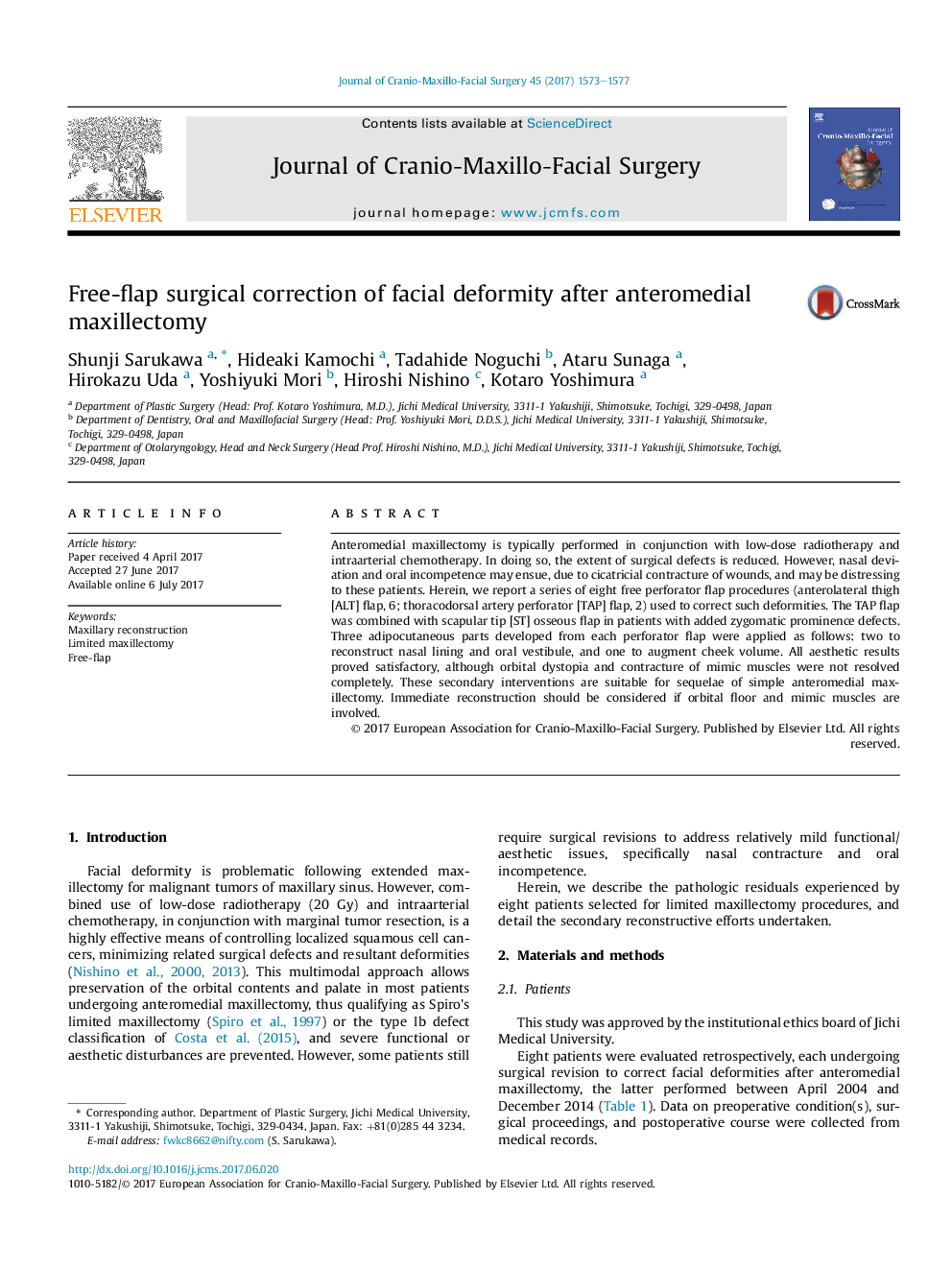| Article ID | Journal | Published Year | Pages | File Type |
|---|---|---|---|---|
| 5640118 | Journal of Cranio-Maxillofacial Surgery | 2017 | 5 Pages |
Anteromedial maxillectomy is typically performed in conjunction with low-dose radiotherapy and intraarterial chemotherapy. In doing so, the extent of surgical defects is reduced. However, nasal deviation and oral incompetence may ensue, due to cicatricial contracture of wounds, and may be distressing to these patients. Herein, we report a series of eight free perforator flap procedures (anterolateral thigh [ALT] flap, 6; thoracodorsal artery perforator [TAP] flap, 2) used to correct such deformities. The TAP flap was combined with scapular tip [ST] osseous flap in patients with added zygomatic prominence defects. Three adipocutaneous parts developed from each perforator flap were applied as follows: two to reconstruct nasal lining and oral vestibule, and one to augment cheek volume. All aesthetic results proved satisfactory, although orbital dystopia and contracture of mimic muscles were not resolved completely. These secondary interventions are suitable for sequelae of simple anteromedial maxillectomy. Immediate reconstruction should be considered if orbital floor and mimic muscles are involved.
